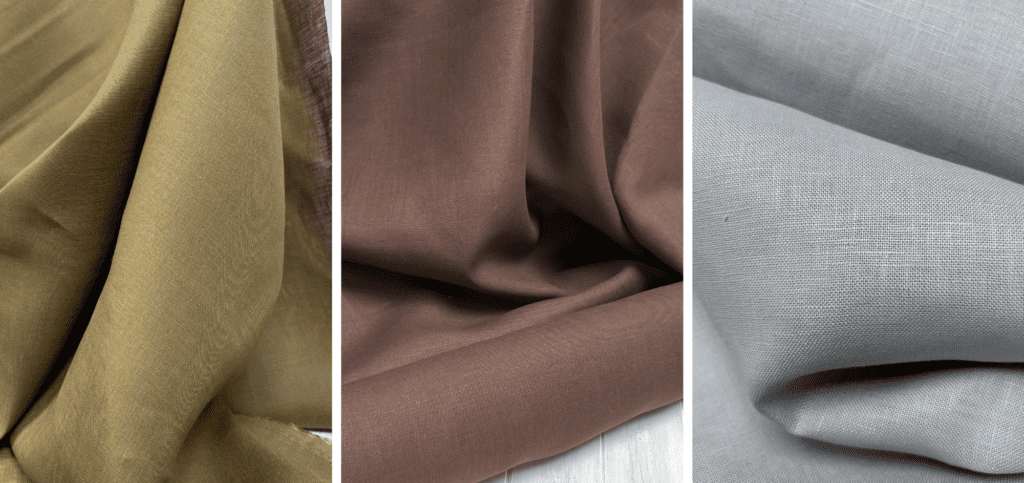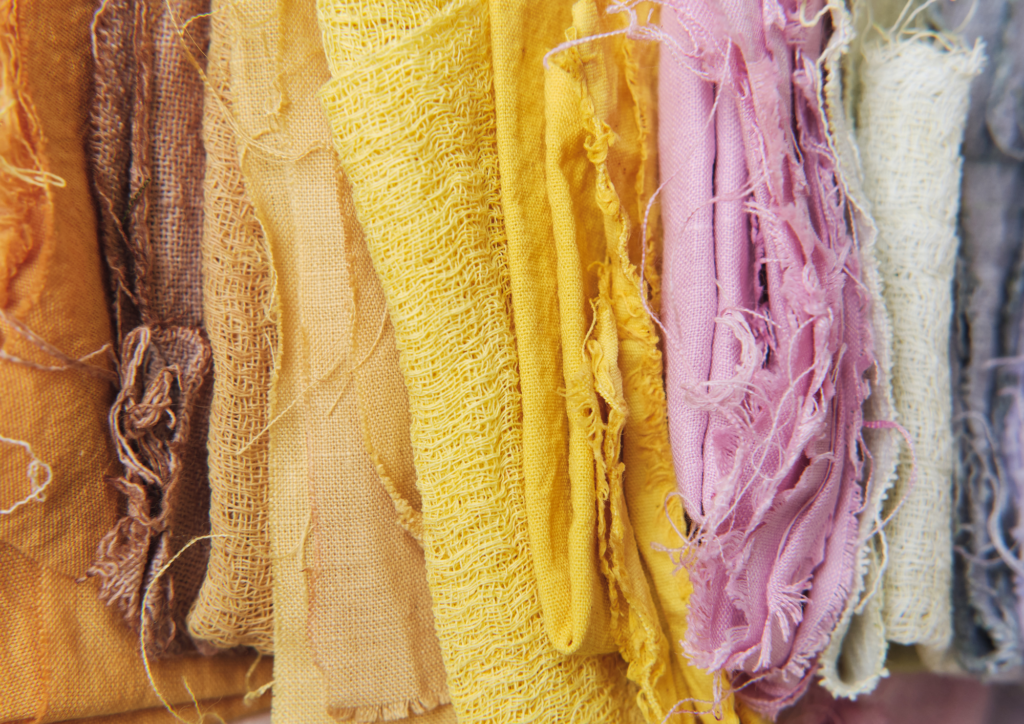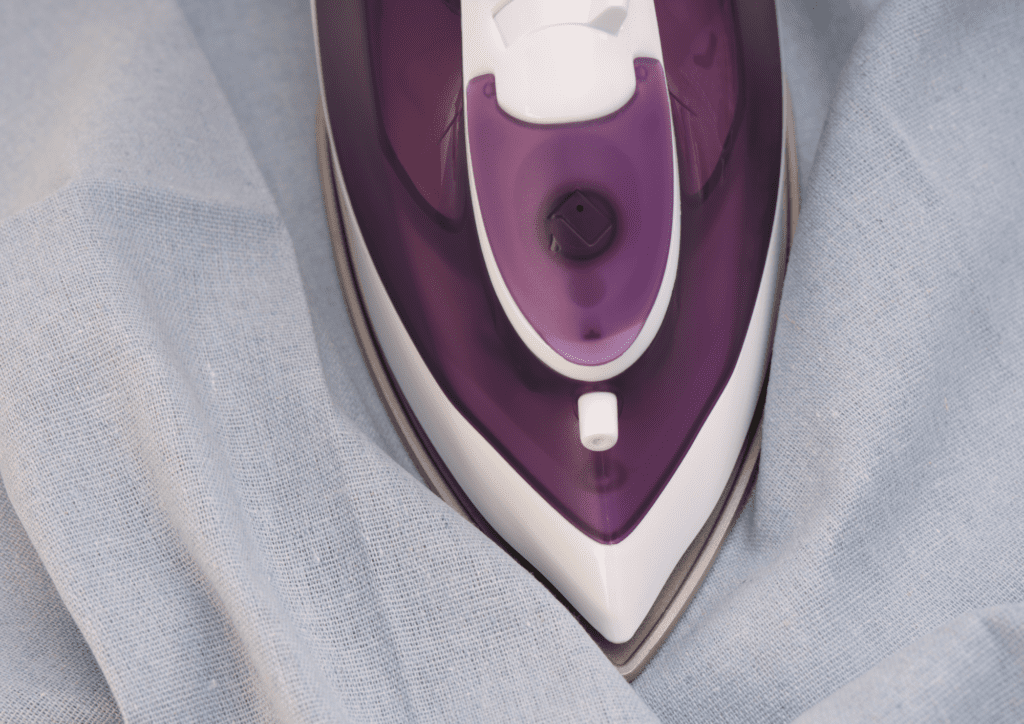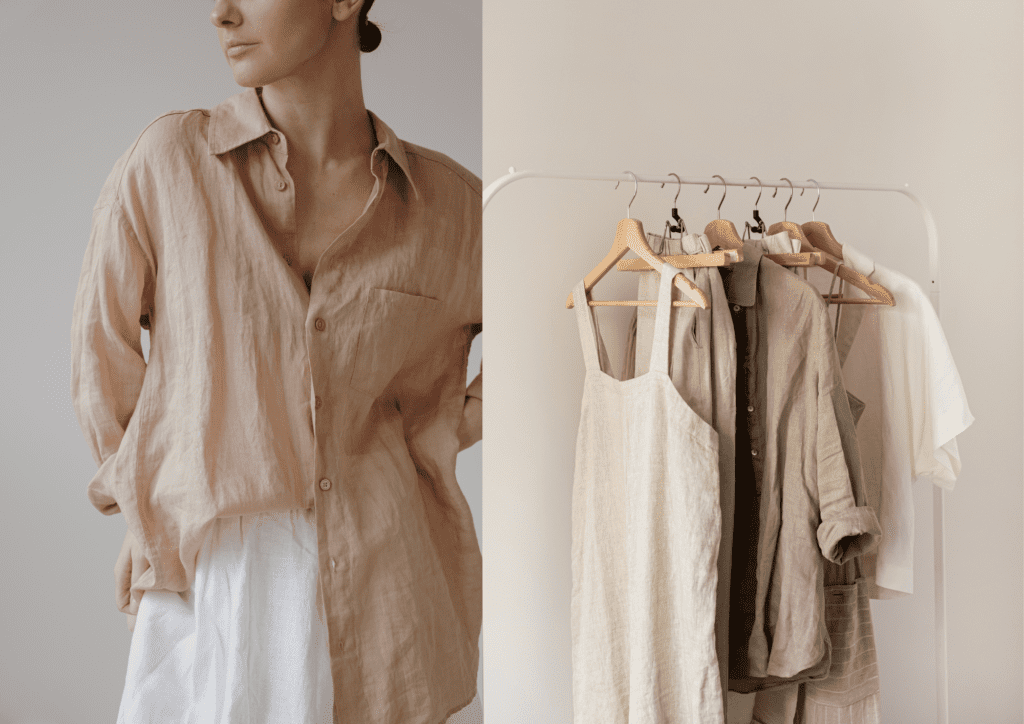
Tips for Sewing with Linen
Linen is a dream to sew with, but it does have its quirks. So, to help you get the best results, I’m sharing my top tips for sewing with linen – from cutting and stabilizing to seam finishes and embracing those gorgeous natural wrinkles.
Ready to sew with confidence? Let’s dive in!
1. Pre-Wash Your Linen – More Than Once!
Linen shrinks when washed, so always pre-wash and dry your fabric before cutting into it. In fact, I recommend washing it twice to ensure you remove all initial shrinkage. To prevent excessive fraying during washing, finish the raw edges first with a zigzag stitch or overlocker.

2. Cutting Out – Minimize Fabric Shifting
Linen has a loose weave, which means it can shift and distort while cutting. To keep your pieces accurate:
- Use a rotary cutter and mat rather than scissors for precise, stable cutting.
- Keep the fabric flat and avoid letting it hang off the table, as this can cause stretching.
- If using scissors, consider placing a layer of tissue paper underneath to help prevent shifting.
3. Stabilize Bias-Cut Edges
Linen is prone to stretching along the bias, which can lead to wavy or misshapen seams. To prevent this:
- Staystitch bias edges before sewing.
- Use a light fusible tape along bias seams for extra stability.
4. Handle Fraying with Care
Linen frays a lot, so it’s essential to finish your seam allowances properly. Depending on your project:
- Use an overlocker for a professional finish.
- A zigzag stitch on the edges helps but may still allow some fraying over time.
- For a lightweight linen garment, consider French seams for a neat, enclosed finish.
- For heavier linen, a flat-felled seam is a strong, durable option—perfect for jackets or trousers.
5. Pressing is Key
Linen loves a good press! To get crisp seams:
- Use a hot iron with steam.
- Press each seam as you go to keep everything looking sharp.
- A pressing cloth can prevent shine, especially on darker linens.

6. Embrace the Wrinkles!
One of the most beautiful characteristics of linen is its natural wrinkles. There’s no avoiding them, so embrace the relaxed, lived-in look that makes linen so unique. If you prefer a crisper look, lightly spray with water and press, but don’t expect it to stay completely smooth.

7. Choosing the Right Thread & Needle
- Use 100% cotton or polyester thread.
- A universal needle (size 80/12 or 90/14) works well for most linens. For heavier linen, try a jeans needle.
8. Consider Lining for Lightweight Linen
If you’re making a dress or blouse, lightweight linen can be a little sheer. A light cotton lawn or voile lining adds coverage without compromising breathability.

With these tips, you’ll be ready to tackle any linen project with confidence!
Happy sewing (and happy St. Patrick’s Day!)
Suzanna x





Leave a Reply